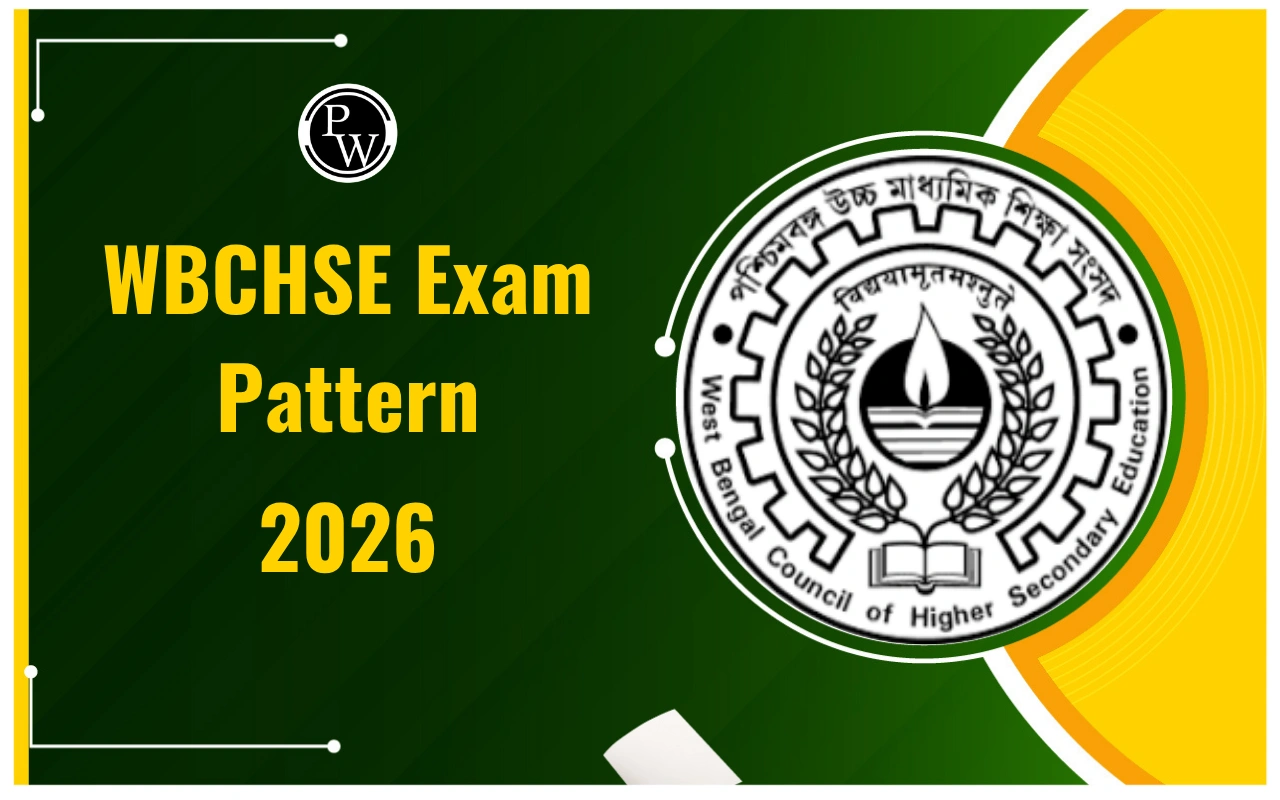

West Bengal HS Exam Pattern 2026: West Bengal Council of Higher Secondary Education has made major updates to the West Bengal HS Exam Pattern 2026 for all Class 12 students. Students preparing for the board exam must know this new structure to plan their study schedule effectively.
Understanding the WBCHSE Exam Pattern 2026 will help you focus on high-weightage topics and manage your time better in the final examination. The change for the West Bengal HS Exam Pattern for Class 12 is the shift to a semester-based system. This new format breaks down the exam into two parts for Class 12, called Semester 3 and Semester 4.
West Bengal HS Exam Pattern Overview
Here are the most important points about the West Bengal HS Exam Pattern 2026 that all students must know:
|
West Bengal HS Exam Pattern Overview |
|
|
Feature |
Details |
|
Semester System |
The Higher Secondary course is divided into four semesters. Class 12 covers Semester 3 and Semester 4. |
|
Total Marks |
Each semester exam carries 40 marks. Most subjects have a total of 100 marks (Theory + Practical/Project). |
|
Question Types |
About 30% MCQs; the rest are Short Answer and Long/Descriptive Questions. |
|
Question Choices (2X Formula) |
Students get double the number of questions to choose from. For example, answer 3 questions, but 6 options are given. |
|
Passing Marks |
Minimum 30% marks in each subject is required to pass. |
Detailed West Bengal HS Exam Pattern 2026
The new examination structure is designed to test your knowledge in a clearer way. Below is the breakdown of the Class 12 examination process.
|
Detailed West Bengal HS Exam Pattern 2026 |
|||
|
Class |
Semester |
Question Type Focus |
Paper Format |
|
Class 12 |
Semester 3 |
30% MCQs (Objective) |
OMR-based paper |
|
Class 12 |
Semester 4 |
Short Answer & Descriptive (Written) |
Full written board-style paper |
WBCHSE Class 12 Marking Scheme
The 100 total marks for a subject are divided between the written Theory paper and the Practical/Project work. The division depends on whether the subject has a practical component.
|
WBCHSE Class 12 Marking Scheme |
|||
|
Subject Category |
Theory Marks |
Practical/Project Marks |
Total Marks |
|
Science Subjects (Physics, Chemistry, Biology, Computer Science, Geography) |
70 Marks |
30 Marks (Practical) |
100 |
|
Language/Arts/Commerce Subjects (Accountancy, Business Studies, Bengali, English, History, Political Science) |
80 Marks |
20 Marks (Project/Internal) |
100 |
|
Mathematics |
100 Marks |
0 Marks |
100 |
|
Music, Visual Art |
50 Marks |
50 Marks (Practical) |
100 |
Question Pattern and Types
The questions in the paper will be of different types. You must prepare for all of them:
-
MCQ: These questions test your basic knowledge. They carry 1 mark each.
-
SAQ: These require brief, direct answers, usually carrying 1, 2, or 3 marks.
-
LAQ: These are essay-type questions that require a detailed explanation. They carry a higher weightage often 5 or 8 marks.
Exam Duration and Timings
-
Standard Duration: For most subjects, the exam duration is 3 hours.
-
Exam Timings: The exam is held in a single shift from 9:45 AM to 1:00 PM.
-
Reduced Duration: Subjects like Visual Art, Music, and Vocational Subjects have a shorter 2-hour duration.
How to Download West Bengal HS Exam Pattern 2026 PDF?
To get the official exam pattern for your specific subjects, you should follow these steps to download the document from the official website:
-
Go to the official website of WBCHSE: wbchse.wb.gov.in.
-
Look for the section named Latest Updates or Notifications.
-
Find the link for WB HS Exam Pattern 2026 or Subject-wise Question Pattern.
-
Click on the link to open the PDF file.
-
Download and save the PDF for your future reference.
Preparation Tips Based on New Exam Pattern
To score excellent marks in the WB HS exam, you should adjust your study plan based on the new pattern:
-
Focus on Concepts: Since the pattern includes both MCQs and descriptive questions, you must have a clear understanding of all concepts. Do not just memorise answers.
-
Practice MCQs and Descriptive Answers: Spend time solving both objective MCQs for Semester 3 and descriptive Short/Long answers for Semester 4 questions.
-
Time Management: Solve previous year's question papers and sample papers within the 3-hour limit. This practice will help you manage your time well during the actual examination.
-
Use the 2X Advantage: Since the pattern offers many internal choices, focus on completely mastering a few important units instead of trying to study everything quickly. Choose the questions you are most confident about in the exam.
